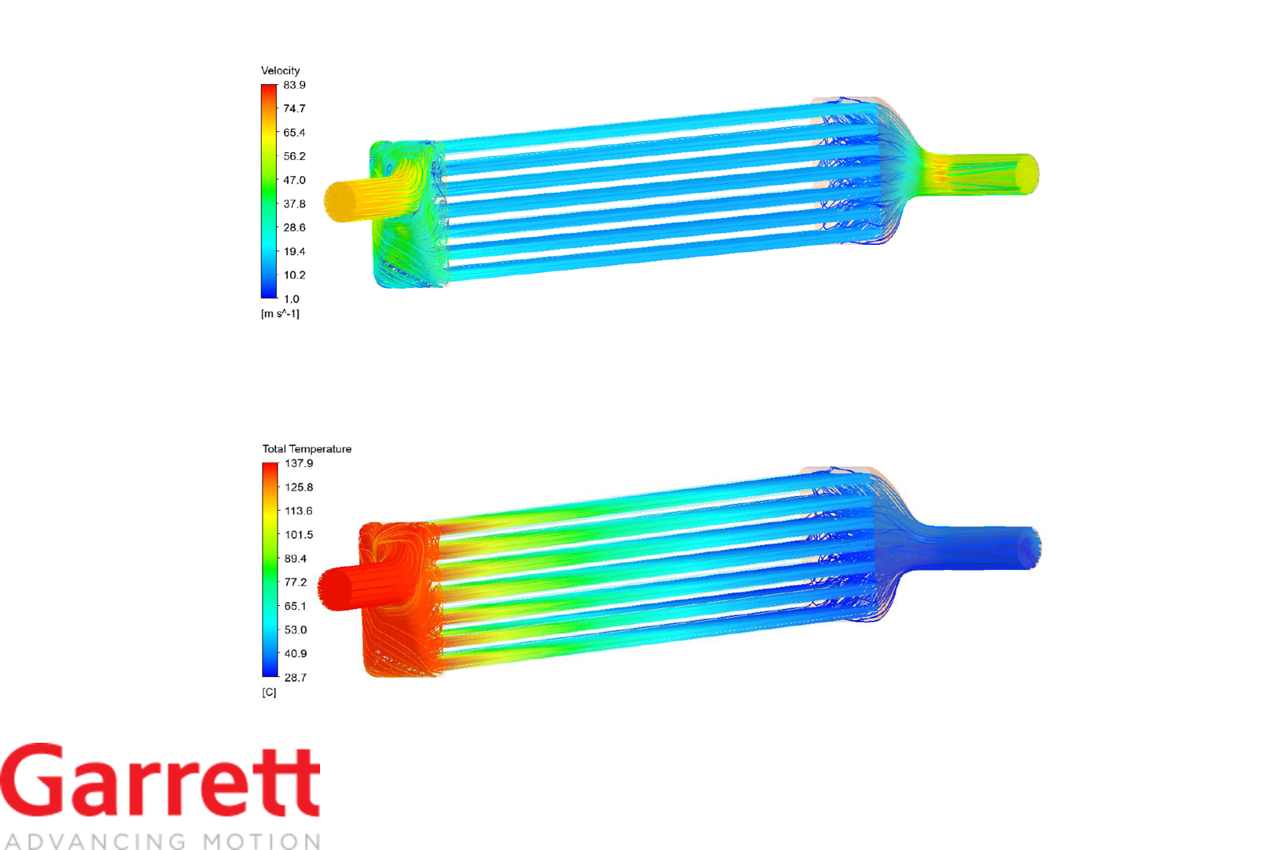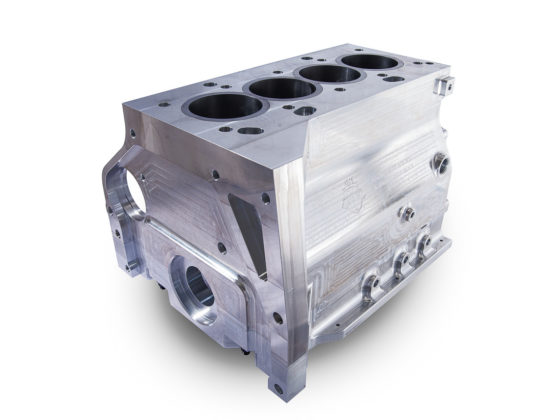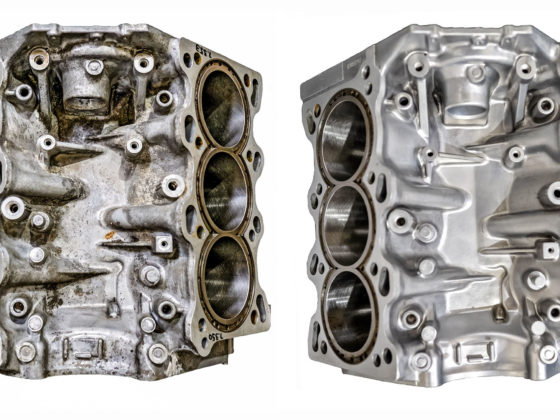
Getting something for nothing is always a good thing. When modding a car, usually every modification has drawbacks. Get more power? Usually more power means more stress on things, more emissions, less mileage more noise. You don’t often get something for nothing. We tested the Civic Si intercooler from Garrett Advancing Motion and found that it worked spectacularly in reducing charge air temperatures and gave us great gains in power with no penalties! This is something worth noting as with ever evolving, well engineered late model cars, it is getting harder and harder to extract significant gains in power with simple bolt-ons.

Looking at the Garrett intercooler, we can see that it a generously sized bar and plate design. Bar and plate intercoolers have a lot of thermal mass, which means they can act as a very generous heat sink and initially pull a lot of temperature out of the charge air. As long as you have adequate frontal area and air flow, this means that they can be a most effective heat exchanger. Bar and plate intercoolers are a lot stronger than the other common type of intercoolers, like the tube and fin, and can take rocks and other debris hits better with little damage. The only slight disadvantage that a bar and plate core has is that they tend to be a bit heavier than a tube and fin. The Garrett bar and plate intercooler core has internal turbulators that slow the air to give it more time through the core to exchange heat and to also give more heat conducting paths to the outside of the tube for better heat transfer. Cheap copy cat bar and plate intercoolers, like those sold on ebay and such, are usually lacking these internal turbulators.

The Garrett intercooler has smooth aerodynamically shaped cast end tanks for the best flow and the most even distribution of charge air flow across the intercooler core possible. This helps make cooling better and results in less pressure drop across the core. Garrett used CFD studies to determine the best end tank shape.

The Garrett end tanks have the correct bosses so the OEM charge pipes will fit perfectly to them with no leaks. The end tanks also have provisions for the stock chassis mounts making the intercooler a true bolt-in part. The intercooler is assembled with strong tig welding for leak and crack free service.

Here you can see the thermal and CFD analysis output for heat exchange and flow across the core. As you can see the charge air flow and the heat dissipation are very well handled by the intercooler end tank design. The swoopy smooth endtanks contribute a lot to how the intercooler performs. We were impressed with how evenly the heat is distributed across the face of the intercooler. With other intercoolers with hand fabricated end tanks when scanning the face of the intercooler with an IR thermometer we have often observed a big temperature gradient.




9 comments
Such great results with this intercooler installed. I have a 2L Accord and would love to replace the equally as lame stock OEM unit with one of these someday if they make one. PRL already makes one for the accord but I trust the Garrett one to be better engineered.
On page 7 you talk about how the turbo spools easier and doesn’t have to work as hard so less lag. But on page 8 on the dyno charge, you can clearly see the stock intercooler come up to power (therefore boost) quicker at the low rpm. If all of the stuff on page 7 is true, should that low rpm performance also be better?
The temperature plot shows the boost is coming on sooner for sure with the Garrett IC. More boost = higher temps which is basic thermodynamics, so no doubt about that. As for why that doesn’t translate into more torque down low on the dyno plot, it’s likely so far outside the expected range of operation that the engine tune isn’t calibrated well. Or, possibly, Honda intentionally tuned the car to have limited torque down low to preserve the engine or trans. Because cold weather would have the same effect. This is where a custom tune with Hondata Flashpro would extract a lot more torque and power.
I think the ecu is limiting the torque and the torque tables have to be edited to see gain here.
This looks great. I would love to see Garrett develop a drop-in intercooler for the Veloster N. Right now the options for intercoolers are limited to offerings from some very small companies who offer almost no data on how their product performs.
I have a VN also and will likely talk to Garrett/Spearco, provide them with my specs and goals, have them size their recommended intercooler and do the custom work to adapt it to the car. I’m past the one size fits all stage in modifying cars and the absence of critical design data with a “well it fits” does not sit well with my wallet. But if Garrett were to make my life easier (drop in) let the good times roll!
Garrett/Spearco will not make you a custom intercooler kit, they are parts companies, not custom fabricators. This sort of validation costs thousands of dollars and Garrett spends a lot of money with us to help them with testing. If you really wanted to pay for it, we could build you a custom intercooler setup and do all of the physical testing and validation and provide you with data but we are talking thousands of dollars. Unless your VN is highly modded, the off the shelf Garrett kit is excellent and will be hard to beat without compromising other aspects of performance. If you wanted to do a custom system we could do it and if you trust our experience, you can skip all of the validation testing.
Mike,
Sorry my post wasn’t clear. I’m not speaking of having either manufacturer construct a custom intercooler, but meant talking with their technical staff and getting their recommendation for their off the shelf units and then doing all the piping and mounting work necessary to fit my car. I agree with you, for my goals they already have existing units that would serve my purpose well. I’m commenting on issue the destrux brought up, the existing drop in kits provide little or no technical data, just it’s better than stock. Wouldn’t the intended use of the vehicle and planned modifications come into play for intercooler selection, e.g. autocross vs. extended track usage?
Thanks
Spearco already sells universal intercoolers with recommended HP ratings.